#hittite civilization
Link
#anthropology#archaeology#history#blog post#blog#blogger#bloggingcommunity#bloggerstribe#writing community#hittite empire#hittite civilization#blogwebsite
0 notes
Text

more ancient dead people 😬
#hetalia#aph ancient egypt#aph minoan civilization#aph mycenaean civilization#aph hittite empire#aph assyria
444 notes
·
View notes
Text

A Rare 2500-Year-Old Saw Discovered in Turkey
Archaeologists conducting excavations in Çorum, the capital of the Ancient Hittite Empire in northern Turkey, discovered a 2,250-year-old saw.
Recent archaeological work in the ancient city led by Andreas Schachner from the German Archaeological Institute has added new findings to this rich collection.
Hattusha was designated a UNESCO World Heritage Site in 1986. It was the ancient capital city of the Hittite Empire, a major power in the Near East during the late Bronze Age (approximately 1600-1180 BCE).
Since 1906, excavations in Hattusha, in the Boğazkale district, have unearthed countless ancient artifacts, including a tablet with mystery language cues.
Hattusa functions as an outdoor museum and is notable for its urban planning, the kinds of buildings that have been preserved (temples, royal palaces, fortifications), the elaborate decoration of the Lions’ Gate and the Royal Gate, and the group of rock art at Yazilikaya.
Professor Andreas Schachner, who leads the excavations, told Anadolu Agency (AA) that the iron of the saw was thicker than contemporary saws, but otherwise, it is very similar to the ones used today.

“This shows us that humans do not simply modify working tools,” he said.
The ancient tool is about 20 centimeters long and was unearthed on the northwestern slope of the large castle area of the ancient city.
Professor Schachner noted that the discovery is a rare one and marks the first of its kind in Anatolia in the 3rd century B.C.
“This saw was found in a building from the Galatian period in the excavation area. The use of this building corresponds to approximately 2,250 years ago. Normally, finding a saw from this period is a very interesting thing. We did some research. There are not many examples. We were able to identify a few examples from the later Roman periods. Still, a saw from the 3rd century BC has not yet been seen, at least in Anatolia,” Professor Dr. Andreas Schachner said.
“As far as we can tell from the holes on both sides of the saw, we think that it had a semicircular handle. Thus, the carpenter of the period may have used the saw by holding it from the wood and moving it.” Professor Dr. Schachner explained.
Hattusha also has also held UNESCO’s title of “Memory of the World” since 2001 with its cuneiform scripts representing the oldest known form of Indo-European languages.
By Oguz Kayra.
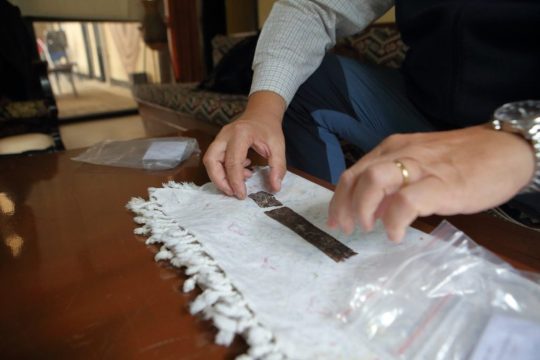
#A Rare 2500-Year-Old Saw Discovered in Turkey#Hattusha#ancient artifacts#archeology#archeolgst#history#history news#ancient history#ancient culture#ancient civilizations#hittite empire
38 notes
·
View notes
Text
Like a stack of dominoes, large empires and small kingdoms across the Eastern Mediterranean and Near East fell within in a matter of decades during the 12th century BC. This is the shocking story of the Late Bronze Age collapse.
#Bronze Age#collapse#civilization#Sea Peoples#Ugarit#Mediterranean#Levant#Hittite#Greek#war#ancient#history#ancient origins
51 notes
·
View notes
Text




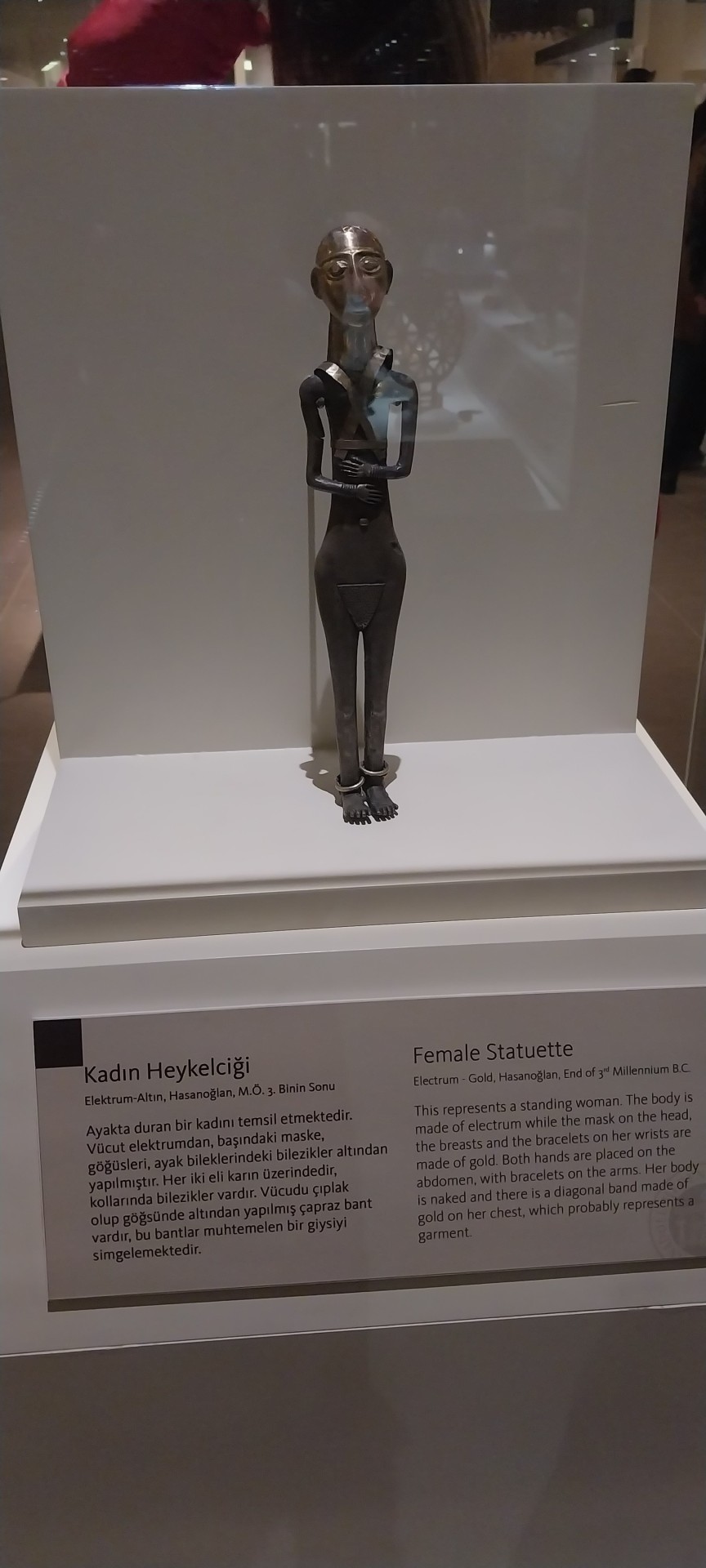

Museum of Anatolian Civilizations - Ankara/ TÜRKİYE
Spring 2023
Photos taken by me 🏛
#anatolia#art#ancient history#history#ankara#museum#museum of civilizations#türkiye#rich history#ancient civilizations#civilización#civilization#sumerian#akhad#hittites#urartu#ionian islands#ionia#roman empire#romans#angora#prehistory#photographers on tumblr
11 notes
·
View notes
Text
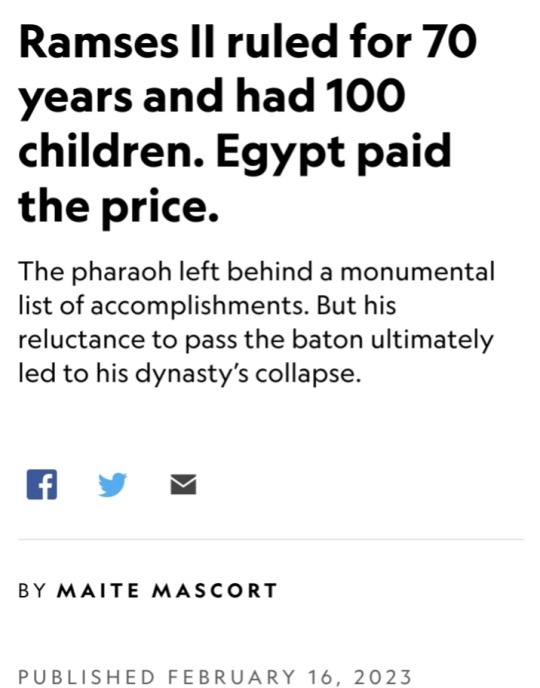

Few individuals in Egypt’s history have aroused as much curiosity, and as much skepticism, as Ramses II, third pharaoh of the 19th dynasty, whom history dubbed Ramses the Great.
Today, Ramses II is probably best known for leaving behind a monumental set of works — palaces, temples, statues, stelae — each one extolling his pharaonic achievements.
Every battle was a mighty triumph, every building spectacular, every statue and public work magnificent, every act a near superhuman achievement.
Ramses’ family came to power as outsiders.
They were northerners hailing from the Nile Delta and rose through military service, rather than southerners rising from elite circles in Thebes.
To rally support, Ramses II used these massive monuments to appeal to the people as part of a campaign to proclaim his greatness for all to see.
Ramses lived around 90 years and ruled for almost 70.
Thanks to his building campaigns, Egyptologists know much about his public accomplishments, but questions about his wives and children still remain.
Great royal wives
One of the most striking aspects of Ramses II’s story is the women who surrounded him:
Great royal wives and concubines, secondary wives and daughters, whom he sometimes “married,” for political show or perhaps for real.
He produced an extraordinary number of sons and daughters:
Some records say as many as a hundred. Because of his long reign, many of his children predeceased him.

Out of all of his wives, only two were known to have had prominent roles:
Nefertari and Isetnofret, the first two named great royal wives.
While the former figures prominently in Egyptian sources and countless representations of her exist, little is known of the latter, almost as if Ramses wanted her hidden.
It is only natural to wonder about the reasons for such unequal treatment.
When he became co-regent with his father, Seti I, Ramses II received a palace in Memphis, just south of the Nile Delta, and a large harem, including the first two great royal wives.
The origins of Nefertari and Isetnofret are unknown but that has not prevented the wildest of speculation about them.
Everything suggests that Nefertari was Ramses II’s favorite wife. Her beauty is attested to in the statues and paintings in her tomb in the Valley of the Queens.
However, it is uncertain what she actually looked like, since some images raise doubts about who is depicted.

For example, in Karnak, a small statue of Nefetari stands at the foot of a colossus representing Ramses II, her husband.
The colossus was later usurped by Pharaoh Pinedjem I, who had his name inscribed on it, and the features of both figures may have been modified.
Was only the name changed? Is that beautiful face still Nefertari’s? Egyptologists believe so.
Nefertari took part in official events alongside Ramses.
She was shown celebrating his coronation, in festivities of the god Min, and in Nebunenef’s enthronement as High Priest of Amun.
Her diplomacy culminated in a peace treaty between Ramses and the Hittites several years after the Battle of Kadesh (1274 B.C.) had resulted in a stalemate between the two powers.
Ramses II showed a clear predilection for Nefertari, devotion worthy of a great love story.
When he built the great temple of Abu Simbel, he made sure that Nefertari, then deceased, was on the facade, next to Tuya, his mother.

In this temple, Nefertari is transformed into Sopdet, the star Sirius, whose appearance presaged the Nile’s annual flooding.
Farther north, another smaller temple dug into rock is dedicated to Nefertari herself.
There, she is identified with the goddess Hathor. Carved into its facade is a tribute:
“Nefertari, she for whom the sun shines.”
Was Isetnofret the forgotten one? So it seems.
Until Nefertari died, around year 26 of Ramses II’s reign, Isetnofret’s likeness did not appear in the many temples the king built in Nubia, nor in those in Karnak and Luxor, where Nefertari is often portrayed.
Isetnofret was finally represented in some temples for her connection with her children.
Nefertari’s image may be seen in more places, but it was Isetnofret who bore her husband the two children closest to his heart.

Sons and daughters
Ramses II had a hundred or so sons and daughters with the wives in his harem.
Of his recognized children, some would play important roles, but only those born to Nefertari and Isetnofret appear on his monuments.
In the Nubian temple of Beit el Wali, a young Ramses, then co-regent with his father, Seti I, is shown suppressing a Nubian uprising.
The pharaoh’s royal chariot is flanked by two figures identified as Amenherkhepshef, his eldest child with Nefertari, and Khaemwaset, Isetnofret’s son.
Of all Ramses II’s sons, Khaemwaset is believed to have been his favorite.
Instead of taking up arms against his elder brother (also named Ramses), Khaemwaset became Grand Master of the Artisans of Ptah, a title in Memphite doctrine equivalent to High Priest of Amun in Thebes.
He also restored a number of pyramids in his father’s name. His work is still evident on the pyramid of Unas, from the 5th dynasty.
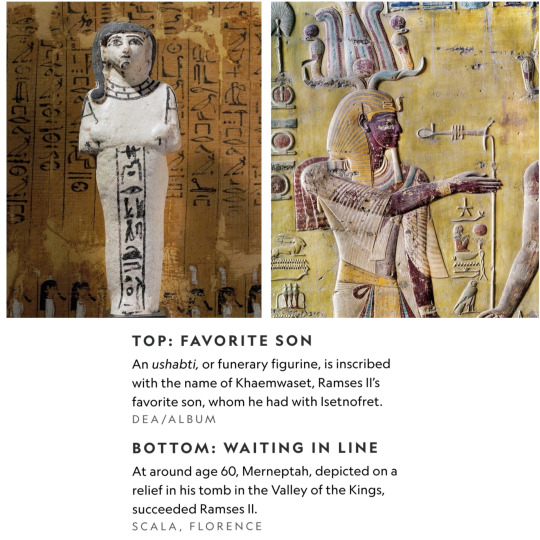
Khaemwaset also planned and directed the work of the “minor galleries,” the Serapeum at Saqqara, the collective tomb of the Apis, sacred oxen of Memphis.
Auguste Mariette’s 1850 excavation of the Serapeum revealed the mummy of a man named Khaemwaset, wearing a golden mask with several ushabtis.
It proved uncertain that it was the mummy of Ramses II’s son, and the location of Khaemwaset’s tomb remains unconfirmed. Much evidence suggests that it is in the necropolis of Saqqara.
The daughters of Ramses II’s great royal wives also held key positions in his court.
In fact, many became great royal wives themselves after marrying their own father.
It had become customary for 18th-dynasty pharaohs to marry their daughters.
While his great royal wife Tiye was alive, Amenhotep III married their daughter Sitamun.
Later, Akhenaten married at least two of the daughters he had with Queen Nefertiti.
No one knows if these marriages were consummated or purely ceremonial.

Ramses II appointed several daughters / great royal wives after the deaths of Nefertari and Isetnofret.
Bintanah (Isetnofret’s firstborn) was followed by Merytamon and Nebettawy (daughters of Nefertari) and Henutmire.
In addition to these daughters, other princesses outside the family also bore the title of Great Royal Wife, such as Maathorneferure, daughter of the Hittite king, and another Hittite princess whose name is unknown.
If Khaemwaset was Ramses II’s favorite son, everything points to Bintanath having been his preferred daughter.
She was given the titles of not only Great Royal Wife but also Lady of the Two Lands and Sovereign of Upper and Lower Egypt.
Bintanath occupies a privileged place on the facade of the temple of Abu Simbel. She and her sister Nebettawy appear on either side of the colossus.
Some historians believe Nebettawy’s mother was Isetnofret, but others consider her Nefertari’s daughter.
Fractured legacy
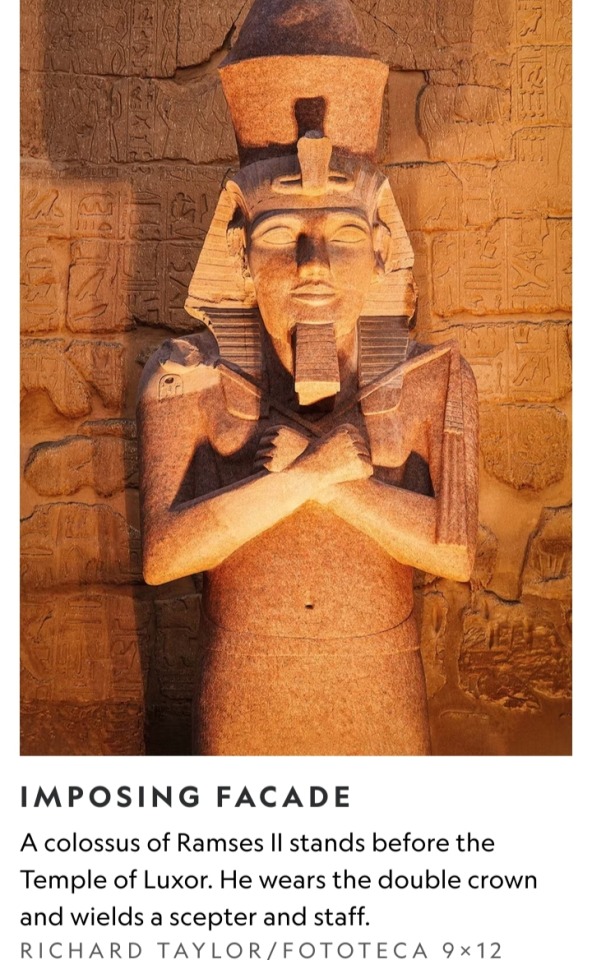
Ramses had no problems siring heirs with his many wives during his long life, but these sons would be forced to be patient; their father held tightly to his throne for almost 70 years.
Ramses had placed his children liberally throughout Egypt’s bureaucracies, corporations, priesthood, and military to foster loyalty he did not naturally inspire.
He was an outsider, a northerner hailing from the Nile Delta, disconnected from the wealthy elites in southern Thebes.
Ramses’ source of strength rested on ties to, not the moneyed or religious classes, but the military. Placing his sons in powerful positions across Egypt helped strengthen Ramses’ hold in these areas.
By the time Ramses II died in 1213 B.C., he was around 90 years old and had outlived many of these sons.
Amenherkhepshef, Ramses’ oldest son and crown prince, died when he was 25 years old.
Khaemwaset also did not outlive his great father and died in his mid-50s around 1215 B.C.
It would be a child of Isetnofret, her son Merneptah, who was 13th in line, who succeeded Ramses.
Merneptah was around 60 years old, well past middle age, when he became pharaoh and donned Egypt’s double crown.
After decades of waiting in the wings to take power, Merneptah might have expected a stable reign, like his father’s, but his hopes were in vain.
During his 10-year reign, his troops were able to defend Egypt successfully from a series of attacks from enemies in the east and west.
But the seeds sown by Ramses II would lead to chaos after Merneptah’s death.
Rivals for the throne, some of whom may have been sons of Ramses II, pushed Egypt into a period of decline and civil war.
By around 1189 B.C., the 19th dynasty would come to an end.

#Ramses II#Ramses the Great#Nefertari#Isetnofret#Seti I#Valley of the Queens#Pharaoh Pinedjem I#Hittites#Battle of Kadesh#Abu Simbel#Tuya#Amenherkhepshef#Khaemwaset#Auguste Mariette#Bintanath#Ancient Egypt#Egyptian Civilization#Egypt#egyptologist#Egyptology#Nineteenth Dynasty of Egypt#19th Dynasty of Egypt
18 notes
·
View notes
Text
Ancient Civilization: Hittites

The Hittites were an ancient civilization that flourished in Anatolia (modern-day Turkey) during the Late Bronze Age, from approximately the 18th century to the 12th century BC. They established one of the earliest known great empires in the region, and their influence extended over a vast territory encompassing Anatolia, northern Syria, and parts of Mesopotamia.
The Hittites were known for their advanced military capabilities, strategic diplomacy, and administrative skills. They were skilled charioteers and developed sophisticated tactics in warfare. Their army played a significant role in the geopolitical landscape of the time, engaging in conflicts and forging alliances with neighboring kingdoms and empires.
The Hittites were also renowned for their contributions to law and governance. They developed a legal system known as the "Hittite laws" or "Laws of Hattusa," which were among the earliest written legal codes in history. These laws provided regulations for various aspects of society, including property, contracts, family matters, and criminal justice.
In terms of religion, the Hittites practiced a polytheistic belief system and had a pantheon of gods and goddesses. Their religious rituals involved offerings, sacrifices, and divination practices. The Hittite religion had influences from both Mesopotamian and Hurrian cultures, reflecting the diverse cultural interactions in the region.
One of the most notable events involving the Hittites was their diplomatic interactions with other major powers of the time, particularly with ancient Egypt. The Hittite-Egyptian diplomatic correspondence, including the famous Amarna Letters, provides valuable insights into their political alliances, marriage alliances, and trade relationships.
Despite their achievements, the Hittite Empire eventually declined due to various factors, including invasions, internal conflicts, and the collapse of the Bronze Age civilizations. The capital city of the Hittites, Hattusa, was abandoned and lost to history until its rediscovery in the early 20th century.
The study of the Hittites and their civilization has significantly contributed to our understanding of the ancient Near East, particularly in the areas of language, culture, law, and diplomacy.
Follow my YouTube channel. Silent tablets documentary, short videos from ancient history.
Follow my Twitter.
#ancient mesopotamia#mesopotamia#archaeology#ancient history#hittites#ancient civilizations#ancient peopel#history#ancient empire#empire#egypt#ancient egypt#turkey
5 notes
·
View notes
Text
The Unconscious Is Also Structured Like Language: Processing Symbols in REM Sleep
The process of creating art has to be an egoless venture, the ulterior motif is to integrate the whole human race; as there’s no Lotus without the mud, one has to be aware that distinctions only exist apparently. In a non-dual awareness, all are conjugated with the Supreme Tattva.
Tat Twam Asi the mahavakya needs to implemented in karma yoga, in the yoga of the intelligence which Sri Krishna…
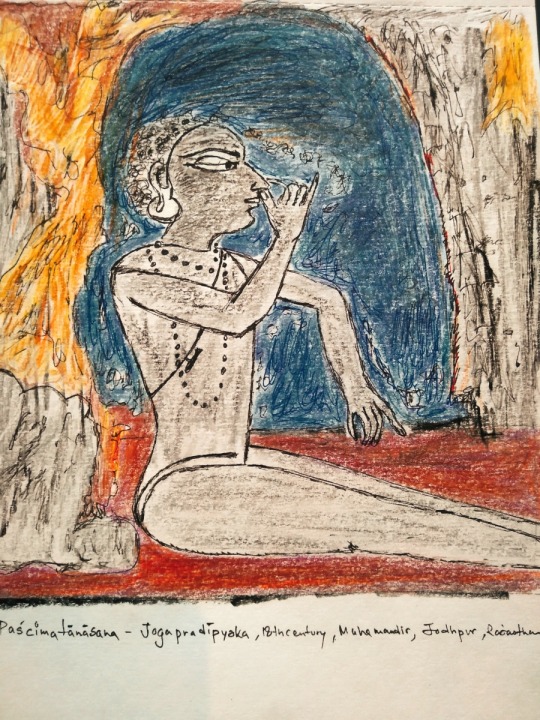
View On WordPress
#adreinhatdt#ancient civilization#augusterodin#ballet#berthemorisot#dancer#daphne#edgardegas#hattusha#hittite#jodhpur#kingmursilis#paulgauguin#tahiti#yoga#Art#Degas#France#Music#Paris#Rajasthan#Russia#Sun
0 notes
Photo
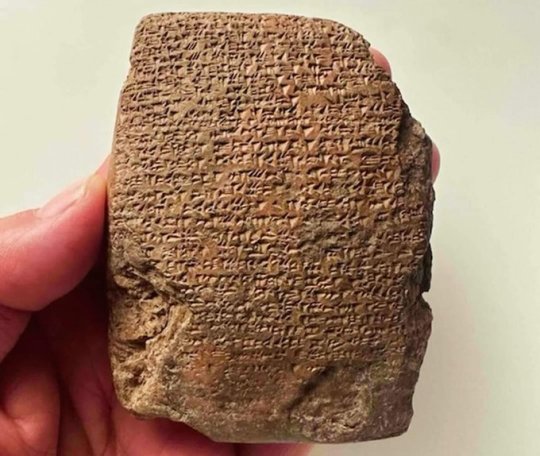
The recent discovery of a 3300 year-old clay tablet in central Turkey has unveiled details of a catastrophic foreign invasion during a tumultuous period of civil war within the enigmatic Hittite Empire.
81 notes
·
View notes
Text
Mitanni is such an interesting ancient Middle East civilization because everyone has heard of the Egyptians and Babylonians, most of you surely have heard in passing about the Hittites, the Assyrians, Mycenaean Greece... and Mitanni was a civilization on par with all those I mentioned, in ancient correspondence it was treated as an equal of the Egyptians and Hittites (the two "superpowers" of the region before the Bronze Age Collapse, when you read about them it's almost like you're rading about the US and the USSR), it was apparently powerful, they invented the spoked wheel which made their chariot stronger, and there's something very interesting that they worshiped Indo-Aryan deities like Mitra, Indra, Varuna... but that's about all we know. They ruled over early Assyria even, they were powerful and well known, but that's all we know.
It's like in the future, we were talking about great nations of the XXth century and we knew about USA, China, Japan, and then some references to one called "Russia" or "URSS", but that's all we knew about them.
They're like that Tartessos, that bronze age extremely rich iberian-phoenician civilization in southern Spain mentioned as a place of great riches that might have been the inspiration for Atlantis. (Oh you didn't know about the bronze age extremely rich iberian-phoenician civilization in southern Spain mentioned as a place of great riches that might have been the inspiration for Atlantis? Now you do).
28 notes
·
View notes
Note
https://vm.tiktok.com/ZGJ4jP9Rp/
Finally someone said it! The western stereotype and the "colonialism" mentality they put in Greece that they are like western Europe when it was never the case
OMG THIS!!!! This!!!!
People go watch this. It must be stressed again and again that the Greek civilisation was not a pure western one (whatever that means) that got orientalised (and thus “bastardised” as often implied by western racists) in medieval and modern times!!! The earliest Greek people did NOT interact with western tribes (except with the Etruscans I guess?)! They interacted with the Egyptians, the Mesopotamians, the Persians, the Hittites, the Phoenicians!!! All eastern cultures! All this long before they interacted with the Romans.
The thing that the Ancient Greek civilisation did differently and this is what the West bases its entire cultural identity on is that it put humans in the spotlight. Instead of being a theocratic culture, despite of course having its own religion, it still was the most anthropocentric culture of antiquity, and even its religion was unusually anthropomorphic. Other than that, Greece and Greek culture expands in the east Mediterranean, had a huge presence in Anatolia for millennias and interacted with North Africa, the Middle East, Persia and even India. To say that it was western but was "compromised" from the east much later is not only racist but also delusional.
And also, the whole West vs East culture is a meaningless fabrication. Each Old World culture is deeply influenced by its predecessors or neighbours and the farther it goes from the origin of advanced human civilisation (Middle East + Egypt) and humanity itself (Africa), the more it deviates. As a result of course Greece should normally be and is by default much more eastern than the rest of Europe, both because it evolved at a point closer in time to the advanced civilizations of the east but also because it is the closest one geographically. The Greek civilisation might have been the milestone for the anthropocentrism of the west, but the funny thing is that this was not even an organic, gradual process. The west was influenced considerably by Greek culture AFTER the 15th century. So it was not a natural evolution of the “western civilisation”. The Greeks influenced the west because they influenced the Romans who then took over all the west and much much later that access to Greek culture was reevaluated through the Renaissance and the Enlightment. It’s not like the Greeks gathered up one day and were like “And now we are going to create the culture of the west which is nothing like those of the east”.
Regarding the colonialism comment, this video doesn’t really address that as *NEWSFLASH TO WESTIES* colonialism is irrelevant to where you are from. To the Greeks, the Persians and the Ottomans were colonisers and they were both more “eastern”. Greeks were colonisers to other people. It really doesn’t matter where one started, regardless of whatever butchered history they learn on the other side of the pond.
The point of the video is that the Greek culture was not a western culture that was later compromised by eastern cultures - it was a culture among other cultures which are nowadays considered “eastern”. But because Greece is in Europe and westies want some claim in ancient heritage, they act like Greeks popped out of nowhere to show to those "eastern lowlifes" how it’s done.
95 notes
·
View notes
Note
Why did the Greeks hate pants? Did it have to do with the way they perceived masculinity?
Greek abhorrence for trousers (pants) is connected almost entirely to perception of them as barbaric attire. They were associated especially with the horse people of the steppes, such as Scythians, Sarmatians, (Amazons), but also the Medes. If barbarian initially just meant non-Greek speaker, over time, it acquired negative connotations. Also, for Greeks, there were “civilized” barbarians (e.g., Egyptians, Assyrians, Persians) and “wild” barbarians (Scythians, Celts, etc.) This seems odd to us, as the word “barbarian” immediately evokes uncivilized images, so how can you be a civilized barbarian? But again, barbaros simply meant anybody who didn’t speak Greek, literally “the bar-bar people” based sorta on Persian, which sounded to the Greek ear like “bar-bar-bar-bar.” So, it’s a slam, but in the more typical ethnocentric way of antiquity. Only after the Persian Wars did “barbarian” take on especially negative meanings.
In artwork, clothing is often used as a signifier of ethnicity.
Tunics, long or short, and kilts had been standard male dress in the ancient near east and Mediterranean for millennia. Ergo, the basic cut was culturally neutral, distinctions made in the weaving, design, cloth, draping, etc. This is why the average person can’t tell the difference between Greek, Roman, or Etruscan clothing. Or between Babylonian, Assyrian, Hittite, Canaanite. Egyptian is a bit more distinctive. But still, it takes time and exposure to learn to see the differences.
Yet trousers…now those look pretty different! Add in the funky jackets and hats, and people from the steppes looked quite different.
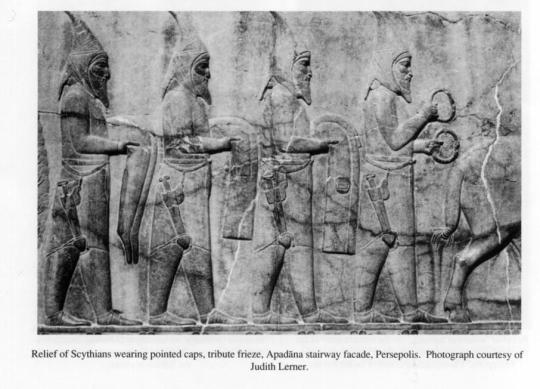
Why trousers? Pretty simple: weather/environment. The horse people on the steppes had to deal with much colder temperatures, In addition, they spent a lot of time on horseback. So trousers (and long-sleeved jackets) were just the thing! They also wore a head covering that sometimes veiled the mouth, even for men, no doubt to guard against dust when riding. They considered people who rode horses without trousers kinda crazy.
So trousers were startling to Greeks, and came to symbolize the exotic northerner. This is why Amazons usually wear trousers. Being originally from the steppe areas, the Medes also wore trousers, although the Persians, who migrated further south, adopted tunics. (Even then, they did occasionally wear loose trousers.)
As Medes and Persians became negativized after the Persian Wars, trousers also took on effeminate overtones because effeminizing the men of another culture was how Greeks insulted them: made them not so scary. Persians and Medes, like the Lydians and other ANE peoples, also liked highly patterned clothing, something again the Greeks associated with women.
In the Archaic era, wealthy Greeks, especially in the Asia Minor (Turkey) coastal cities and islands, also wore patterned clothing. But after the Persian Wars, the duller styles of Athens (and Sparta), and the mainland, gained traction, where patterns were restricted to borders, not the whole piece of cloth. Especially men who persisted in those “fancy” patterned clothes were the soft-living sort “like Persians.”

So that’s where the effeminizing of trousers came from. But there’s another component, related to horseback riding. Again, the steppe people thought anybody who rode horses a lot (as they did) and didn’t wear trousers, were nuts. There were no saddles in antiquity (or stirrups), just a saddlecloth (maybe). You stay on the horse by gripping with your thighs.
Remember, Greek men refused trousers and sometimes didn’t even wear underwear.
Now think about that, on horseback.
Those guys must have had some serious calluses!
“We’re TOUGH, we don’t need no stinkin’ trousers to protect us from riding rash!”
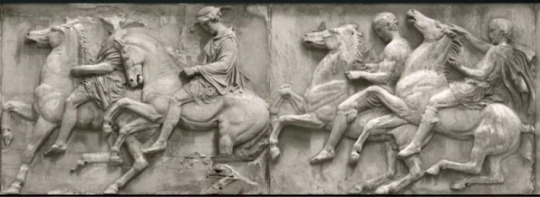
So yeah, testosterone poisoning combined with disdain for “barbarian” cultures, especially “wild barbarians,” led to a widespread contempt for trousers among Greek men of the Archaic, Classical and Hellenistic eras. (By the middle imperial period of Hadrian’s day, knee-length trousers were in, but I’m not a Romanist to know when this change occurred, or why.)
#ancient Greece#Ancient Persia#Medes#Median dress#ancient Greek horsemanship#trousers in the ancient world#Steppe horse people#Classics#tagamemnon#Amazons
359 notes
·
View notes
Text
The most important question for any religion should be: What if civilization collapses and your religion is forgotten?
Some of the biggest religions in the world put a lot of emphasis on divine revelation: Christianity, Islam, Judaism, even the Sikhs, kinda
But here's the thing: It is completely possible that human civilization collapses and that our current religions are forgotten
Take for example the Hittites, their language, religion and writing system were all forgotten. The Minoans also forgot how to write and had to rediscover it, resulting in the Greek alphabet
Of course, such a complete collapse happening today would be extremely unlikely, but it is possible, and that's all that matters for my question
What would happen if the divine revelation was lost?
This a serious question that all religions should be able to answer, and it would teach us a lot about how different religions perceive their divine revelation
For example, in Islam Muhammad is the last prophet, so if the Quran was lost, revealing it to a new person is not an alternative. Would all those future humans be doomed to Hell simply because the revelation was lost long before they were born?
Although I know that most Muslims would argue that the Quran could never be lost, that God would ensure it is never lost, and that this is the reason we have it today in the first place... But what about all the hadiths? They could be lost and without them people wouldn't know many important things. For example the Quran never explicitly mentions that people have to pray five times a day, that bit of knowledge would be lost forever. Similarly, there are many other important aspects of Islam that are only known only through the hadiths
In Christianity this is easier to answer because while they believe revelation to be over, this doesn't mean it cannot be revealed again, there can be new prophets, but what about the priesthood?
Christians that Jesus gave divine authority to the apostles, and they passed it on to others, on an on, till the present day. If all priests die without anointing other priests, that divine authority would be lost. What happens then? A new prophet could tell people all about Christianity, but they would not be able to get married, they could not get their sins forgiven, they could be baptized, but that's about it
I could give you more examples, but you get the idea. Religions that depend on divine revelation should be able to answer what would happen if that revelation was lost, and their answer would reveal some interesting aspects about them
19 notes
·
View notes
Text

A 2,800-Year-Old Ivory-Decorated Piece Discovered in Turkey
An ivory-decorated piece, estimated to be approximately 2,800 years old, was found during the archaeological excavation in the Hattusa Ancient City in Çorum, the heart of Turkey.
The Hittite capital’s ruins date back to the Bronze Age, around 2000 BC. In 1986, the site was inscribed on the UNESCO World Heritage list.
Hattusha, which was also included in UNESCO’s “Memory of the World List” in 2001, as it contains cuneiform tablet archives representing the oldest known Indo-European language, has the title of the only ancient city in both lists of UNESCO.
Excavations that started 116 years ago in the ancient city of Hattusa are still ongoing. Excavations have been carried out on behalf of the German Archaeological Institute since 2006, under the direction of Professor Andreas Schachner.
In the 117th year of the excavations, a work revealing information about the artistic structure of the Iron Age was unearthed on the northwest slope of the Great Fortress area of the ancient city.
The ivory piece, which is approximately 30 centimeters long and 10 centimeters wide, features a sphinx (a statue with a human head and an animal body), a lion, and two Tree of Life figures drawn on a shiny background.
Scientific studies are ongoing regarding the piece on which the figures can be seen under suitable light conditions due to the layer on it.

Excavation Director Prof. Dr. Andreas Schachner told AA correspondent that the artifact was found in the Iron Age layer at the Hattusa Archaeological Site, which bears traces of many civilizations.
Schachner, stating that the well-preserved piece is approximately 2,800 years old, said, ‘In its period, it was most likely added as a decoration to a wooden box or furniture made of wood. The artifact is broken on the right and left sides, and the upper and lower sides are in their original state. Therefore, we guess that the piece is longer.”
Schachner, the significance of the piece, explained:
“This artifact is a unique work for Boğazköy. For the first time, we are confronted with a piece adorned with a scene so intricately and beautifully crafted. Extensive excavations have been conducted in Boğazköy for the Iron Age, but we have not come across such a detailed work.
In terms of both the stage and the iconography and style used, we can better reveal the relations of Boğazköy towards Southeastern Anatolia and its artistic relations towards the Southwest and Greece in its period, that is, in the first millennium BC. “
Schachner added that the work will be exhibited at Boğazköy Museum after completing the scientific studies.
By Leman Altuntaş.

#A 2800-Year-Old Ivory-Decorated Piece Discovered in Turkey#Ancient City of Hattusa#ancient artifacts#archeology#archeolgst#history#history news#ancient history#ancient culture#ancient civilizations#Iron Age#Iron Age art
82 notes
·
View notes
Text
Experts have unlocked an unknown episode of ancient Hittite history from the inscriptions of a 3,300-year-old clay tablet, which was discovered in central Turkey in 2023. This palm-sized relic narrates a gripping tale of foreign invasion, civil war, and divine prayers, shedding light on a tumultuous era in the Hittite Empire's past.
30 notes
·
View notes
Note
the internet is wild, "person of color" is a construction based on our modern understandings and conventions of race, informed by Europe's history with both African slavery as well as global colonialism. None of which had happened yet in 500 BCE Greece.
whats more Anatolia, modern Turkey, was not yet populated by Turks, Turks came from central Asia in about 1100 CE. The people it's theorized the Greeks took Apollo from where Hittites, who its believed came to Anatolia from the North, Europe, one theory is they were a civilization in the Danube Valley before heading south around 3000 BCE, does that make them "white" well since thats an identity based on events that took place long long after they were all dead.....
So the last anon really was just trying to start a fight over nothing good to know - honestly tho this is all really interesting information thanks for sharing
#ask#anon#you can probably tell i have absolutely no knowledge of this kinda stuff#so dont really feel comfortable saying anything#just in case#but dont come into my inbox being rude#just bc your having a bad day
70 notes
·
View notes